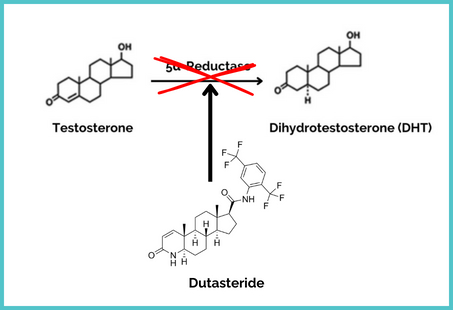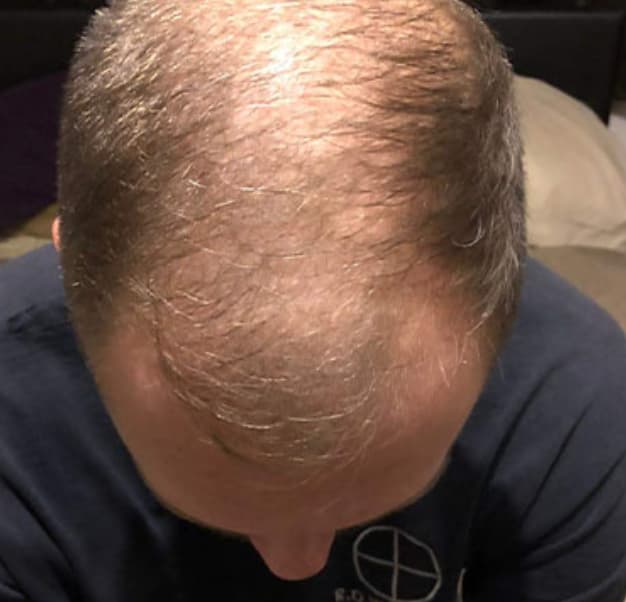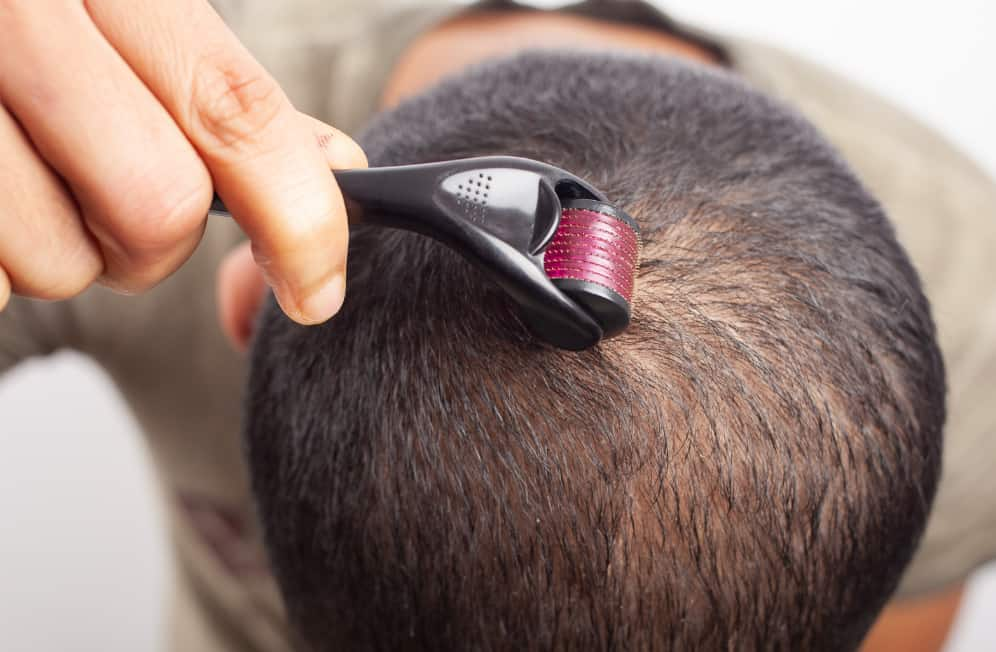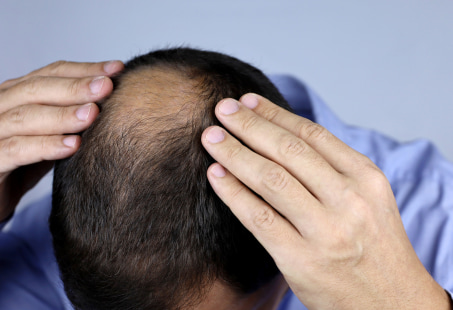Dutasteride is a medication that has become increasingly popular for the treatment of androgenetic alopecia or pattern baldness. It’s often compared with finasteride in terms of its effectiveness, and research shows that dutasteride is more stronger than finasteride.
However, there are certain assumptions about this drug that should be addressed before you start taking this drug (so you can manage your expectations). Additionally, just because it’s stronger than finasteride doesn’t always mean that your doctor will recommend you dutasteride for hair loss.
In this guide, you’ll learn more about the drug itself, whether or not it actually works for hair, and how has it been used for application.
What Is Dutasteride?
Dutasteride is a 5-alpha-reductase inhibitor that is used in the treatment of benign prostatic hyperplasia (BPH) and androgenetic alopecia. However, it should be noted that this drug is not approved by the FDA and MHRA for treating pattern baldness. Still, it’s prescribed off-label for this purpose.
5-alpha-reductase is an enzyme that is involved in the conversion of testosterone into dihydrotestosterone (DHT). The way this drug works is that it blocks the activity of this enzyme and decreases the concentration of DHT in the body – the hormone that is both associated with the development of BPH and and pattern baldness.

Dutasteride is available in its generic form and as Avodart, which is the branded version of this drug. The active ingredient of the latter is also dutasteride, although it can cost you more. In any case, this drug is only available on prescription, so your doctor can best advise you on its usage.
Side Effects Of Dutasteride
When taken orally, dutasteride may result in some of the following side effects:
- Tender breasts
- Enlarged breasts
- Decreased libido
- Erectile dysfunction
- Ejaculation issues
- Impotence
- Pain in and swelling of testicles
- Allergic reaction
It should be noted that this list is not exhaustive, therefore, you must regularly consult your doctor.
Mayo Clinic also warns that dutasteride is not a drug for “women and children.” Especially since this drug can be absorbed through the skin, pregnant women should not handle or touch it; it can negatively affect male foetuses.
Research and case studies have demonstrated the use of this drug in the effective treatment of androgenetic alopecia in females. However, you must always talk to your doctor about this first as there can be other potential treatment options that can better meet your needs.
How Does Dutasteride Work For Hair Loss?
Since 5-alpha-reductase inhibitor, it helps with hair loss by blocking the conversion of testosterone into dihydrotestosterone – the hormone that’s mainly considered the culprit in the shrinking or miniaturisation of hair follicles, leading to eventual baldness.

Here, you should also know that there are two forms of the enzyme 5-alpha-reductase inhibitor: Type 1 and Type 2. Where finasteride, which is another 5-alpha-reductase inhibitor and hair loss drug, inhibits just the Type 2 of the enzyme, dutasteride is relatively stronger in that it stops both Type 1 and Type 2 isoenzymes, as per a 2004 study published in Reviews in Urology.
And as reported in another 2019 study published in Clinical Interventions in Aging, 0.5mg/day of dutasteride lowered DHT levels in the scalp by 51%+, whereas 5mg of finasteride per day led to a lowering of around 41%.
Research in the Journal of Clinical Endocrinology and Metabolism also demonstrated that 0.5 mg of dutasteride blocked 94.7% of DHT compared to ≈71% of 5mg finasteride. Therefore, in short, dutasteride may be more effective in the treatment of pattern baldness than finasteride.
However, there are a few considerations about this drug. For one, since dutasteride is a stronger drug, some have more concerns about its potential side effects. Because of this, your doctor might recommend finasteride before prescribing dutasteride.

Another thing that some draw attention to is that dutasteride may not be for bald areas to regrow hair. Instead, it can help where you’re experiencing thinning and stop more hair loss from occurring. Therefore, make sure to discuss everything with your doctor so that you have realistic expectations about the outcome.
How Effective Is Dutasteride For Hair Loss?
From increasing the number of hair to its thickness, several studies have demonstrated the effectiveness of dutasteride in the treatment of androgenetic alopecia in males and females.
A 2022 study published in the Annals of Dermatology reported that dutasteride showed better hair growth in patients with male pattern baldness compared to finasteride. Not only was it effective, but it was also considered safe for the treatment of androgenetic alopecia.
A 3-year study published in the Indian Journal of Dermatology, Venereology and Leprology in 2014 reported that dutasteride resulted in increased hair thickness in 83.3% of the participating women with androgenetic alopecia compared to the 81.7% achieved by finasteride.
How Long Does Dutasteride Take To Work For Hair Loss?
You might notice hair growth 3 months after you start taking dutasteride. Around the 6-month mark, the results might become more noticeable. However, you might have to wait for around a year to see the full results.
Keep in mind that dutasteride is the kind of drug that you have to keep taking in order to see results. If you stop taking the drug, your hair loss will return. So, make sure to discuss a suitable treatment plan with your doctor, especially in the event that you’re experiencing any side effects of dutasteride.
How To Use Dutasteride For Hair Loss?
Different preparations of dutasteride have been made available, including oral capsules, injections, and topical solutions.
For instance, dutasteride-containing mesotherapy injections have been shown to help with pattern baldness, as reported in 2021 research in the Journal of Cosmetic Dermatology. The use of microneedling with the topical application of dutasteride has also been investigated, although the evidence on the topical use of this drug is, in general, limited.

Thinking that it might lower the risk of getting side effects, some people also consider applying the gel from its capsule on the affected areas of the scalp. However, as noted in a 2021 review in the Journal of Cosmetic Dermatology, it’s the large size of the molecule of dutasteride that has made its topical formulation difficult.
It might simply remain on your scalp. With this, there’s no guarantee that the drug will work for you. Therefore, again, your doctor can advise you on the best drug delivery system for your needs.
How Much Dutasteride Is Taken For Hair Loss?
Your doctor might prescribe you 0.5 mg of dutasteride, once every day for your hair loss. However, this drug is also available in other dosages, such as 0.1mg or 2.5mg. Your doctor may check for things like your age and the extent of your baldness in determining the best dosage for your needs.
Conclusion
There is promising research on the use of dutasteride for hair loss in the treatment of androgenetic alopecia. However, before you start any kind of treatment for your hair loss, make sure to discuss its pros and cons with your doctor.
Some other treatment options for hair loss also include minoxidil, laser caps, platelet-rich plasma (PRP) injections, hair transplant, etc. To decide on what will best meet your expectations and aesthetic goals, make sure to consult a qualified and board-certified doctor.
Reviewed and appoved by Trichologist Yaprak Yazan
FAQ
Why is dutasteride not FDA-approved for hair loss?
There are different things that go into the FDA approval process. For instance, the FDA itself states that it analyses the intended use of the drug, “current treatment landscape” (to check pros against cons), checks clinical data, etc., as a part of its framework for drug approval. Therefore, there are different factors that can affect the approval process of a drug, which includes dutasteride.
How to get dutasteride for hair loss?
Dutasteride is a prescription-only drug, so you’ll have to discuss your hair loss with a doctor, and then they will prepare a suitable plan of action for you.
Is dutasteride better than finasteride for hair loss?
Dutasteride is considered more effective than finasteride since it works on both Type 1 and Type 2 5-alpha-reductase enzymes. However, this doesn’t mean your doctor will always prescribe dutasteride over finasteride, as there may be some concerns about its usage. Additionally, between the two, finasteride is specifically FDA-approved for male pattern baldness whereas dutasteride isn’t.
Is dutasteride better than minoxidil?
To our knowledge, there’s not enough comparative research on this topic. Both drugs work in different ways to help with hair loss, and a combination therapy of them might also be recommended by your doctor.
How often to take dutasteride for hair loss?
You might be prescribed dutasteride once every day. But treatment plans can vary between patients depending on their needs.
Is dutasteride safe for hair loss?
Different researches have reported that dutasteride may be a safe for the treatment of pattern baldness. However, keep in mind that the drug can cause side effects and pregnant women are also warned against touching or handling it as it can affect the male foetus. Before taking the drug, have a detailed consultation with a doctor.


